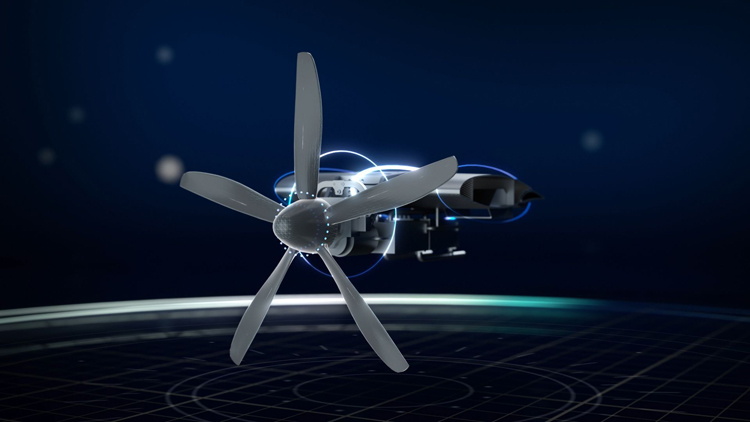INDIAN ARMED FORCES CHIEFS ON
OUR RELENTLESS AND FOCUSED PUBLISHING EFFORTS

SP Guide Publications puts forth a well compiled articulation of issues, pursuits and accomplishments of the Indian Army, over the years

I am confident that SP Guide Publications would continue to inform, inspire and influence.

My compliments to SP Guide Publications for informative and credible reportage on contemporary aerospace issues over the past six decades.
Flying Fuel Cell™: MTU Aero Engines develops aviation fuel cell technology
- Market launch for shorter commuter and regional flights planned for 2035
- MTU subsidiary eMoSys develops an electric motor

Aviation propulsion systems are a major factor in achieving zero emissions in the skies. MTU Aero Engines is working on various concepts for all thrust and power ratings to achieve the aviation industry’s big goal. “Among other things, we are forging ahead with the full electrification of the powertrain,” explains MTU CEO Lars Wagner. “We’ve identified converting liquid hydrogen into electricity using a fuel cell as the area with the greatest potential for achieving this.”
MTU’s revolutionary concept is called the Flying Fuel Cell™ (FFC). A team of about 100 experts – and growing – is currently working on the FFC in Munich. The principle behind it is that a fuel cell converts liquid hydrogen into electrical energy. This means a high-efficiency electric motor drives the propeller. There are various advantages to this approach. First, fuel cells are highly efficient. Beyond that, they do not emit CO2, nitrogen oxides (NOx), or particulates; the only emissions are of water. “The FFC reduces the impact on the climate by as much as 95 percent, so it's practically zero,” explains Dr. Stefan Weber, Senior Vice President Engineering and Technology.
Plans call for the FFC to be used at first on shorter commuter and regional flights. Weber continues: “We’re aiming to launch on the market in 2035 there.” With improved efficiency, the Flying Fuel Cell will then be used in short- and medium-haul flights as well starting in 2050, further reducing the climate impact of commercial aviation.
MTU and eMoSys develop an electric motor
The highly efficient electric motor for theMTU-FFCis being developed by eMoSys GmbH. The Starnberg-based electric motor developer and small-volume manufacturer has been a part of MTU since April. Germany’s leading engine manufacturer is thus consistently expanding its know-how and activities relating to electrification of the power train “Together with eMoSys GmbH, we plan toaccelerate the use of electric motors in aviation and make them market-ready,” said Wagner in the announcement about the takeover.
The eMoSys motors already provide the highest power density and reliability known today. The motors are mainly used in the automotive, racing, rail and medical sectors. The e-motor that eMoSys and MTU are currently developing for the FFC will be the first aviation application of eMoSys, and it will also set new standards. “It achieves outstanding values in terms of power density, size and weight,” explains Barnaby Law, Chief Engineer Flying Fuel Cell at MTU in Munich.
By the numbers: With a diameter of only 300 millimeters and weighing just 40 kilograms, the motor is designed for a continuous output of 600 kilowatts and achieves a performance density of 15 kilowatts per kilogram. Law: “Those are outstanding motor values, and their integration and interaction with the Flying Fuel Cell have been fully taken into consideration.” He continues, “With more than 96% the motor has extraordinarily high efficiency at continous take off power and produces relatively low thermal loads.” The fuel cell expert names two other unique characteristics: the fluid-cooled motor can work at up to 85° Celsius, and it will also have multi-stack compatibility. “The design combines the high performance that eMoSys previously provided for motorsport motors with our high reliability and safety standards for aviation,” sums up Law.
Cooperation with DLR and EASA
Work to develop the FFC technology is proceeding in cooperation with the German Aerospace Center (DLR). “MTU’s job is to develop the entire hydrogen-powered fuel cell powertrain, including the liquid hydrogen fuel system and controls,” explains Law. A Do228, owned by DLR, is being used as a technology platform and flight demonstrator. The goal is to replace one of the two conventional gas turbine propulsion systems with a 600 kW electric powertrain with energy supplied by a hydrogen-powered fuel cell made by MTU and test the new configuration. The partners aim to launch the flying lab in the middle of this decade. Extensive ground tests and advance testing will take place before then.
At the same time that this work is under way, MTU is also cooperating with the European Union Aviation Safety Agency (EASA) and working on approval requirements. Weber adds: “We have embarked on an innovation partnership where we are working together to study possible options for future certification of a flying fuel cell, since everyone involved is in uncharted territory here.” New standards, approval specifications, and documentation procedures will have to be defined in order for flying fuel cells to operate safely as an innovative propulsion concept.
CEO Wagner sums up: “For an engine manufacturer like MTU, developing an airworthy fuel cell is a big opportunity, since the experience and data we gain in the process, including in the areas of control and qualification under aviation law, will be crucial to the further product development process.”





